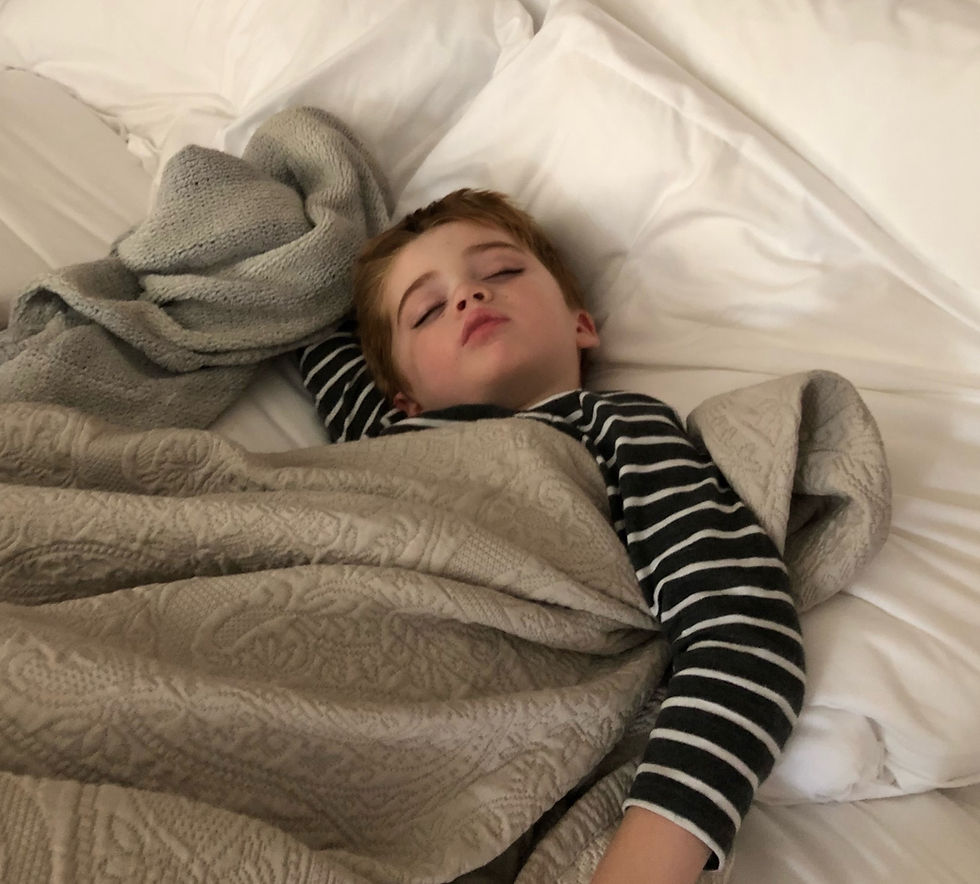Our Go-To Sensory Play Ideas (and Why You Should Try Them!)
- Work & Play

- Jun 27, 2023
- 3 min read
Updated: Dec 3, 2023
If you are a parent of a young child who reads, listens to podcasts or scrolls about things relating to parenting, you may have come across the phrase SENSORY PLAY. While the term has its roots in early childhood development and education, sensory play is a fundamental part of any age child’s development. Sensory play is one piece of the parenting puzzle that we can each give our kids.

Sidebar: What in the world are we talking about? Are we just giving a new name to an old way to play? The awesome news is that many children already know how to do this and will seek out sensory exploration all on their own (bonus!) However, as our culture moves at a faster, less interactive pace, we see young children who are getting less and less sensory play regularly.
While we may laugh at our own memories of being outdoors barefoot in summer, spending time in a sprinkler or building a pillow fort, these are all sensory play opportunities that today’s children often have less access to in their day to day.
Here’s your cheat sheet on all things sensory play.
The What’s:
Sensory play refers to any activity that engages the senses - touch, smell, taste, sight and sound.
Young babies come to mind as they seek out touching, smelling and tasting the immediate world around them. Sensory exploration continues throughout our entire lives but for young children it is paramount in how they come to understand and experience the world.
The Why’s:
Sensory play
literally fires up the nervous system in ways unlike other play.
Children are drawn to what excites them, sparks curiosity and soothes them. Engaging the nervous system is a way that we signal to our brain that we are learning, growing and engaging. Through sensory experiences, children intuitively learn.
The Caveat:
Sensory issues or avoidance are real for some children. One of the best ways we can address the needs of our kids is to give them opportunities to explore. If you see your child avoiding or really disliking an experience, tune in and make a note. Share it with your pediatrician or teacher to get to know your child as a learner.
Want our TOP FIVE sensory play ideas that you can do with little prep or work?
Water Play
This is one you may already be doing in the bath. Giving extra play time in the bath is simple enough. Extra Credit: Try a bin with a small amount of water with cars, baby dolls, sponges, cups or spoons. Place the bin on a towel where kiddos can play and let them give it a try.
**Common Sense Reminder**
**Anytime children are playing with or near water, adult supervision is a must.**
Sand Play
While not always a parent favorite, lots of children adore playing with sand. We live in a pretty incredible time when sand is not only for the beach or sandbox at the park. Kinetic sand is a teacher approved sensory mainstay. Put some in a bin or tray and add whatever you have on hand - cups, spoons, cars, play figures, etc. You can find kinetic sand online, in grocery stores, at craft stores and toy stores.
Rice
Get yourself a large bag of rice and add it to a bin with tall sides. Place everything on a towel to catch the inevitable getaways. Add (you guessed it) cups, spoons, funnels, play figures, etc. They will know what to do! Some little ones may need a reminder to pour slowly or low. That’s all part of the learning.
Pom-Poms
These soft, fluffy and quiet (!!!) craft items are great for littles to engage with for sensory play. Depending on the age of your little one (and how eager they are to put things in their mouth) you will want to decide which size pom pom might work best. Get a couple of large bags of pompoms, add them to a bin and you’ve got a fun, soothing sensory play idea. Add cut up paper towel tubes or pool noodles and an empty egg carton. They will love it.
Playdough
We are diving into the sometimes divisive world of playdough. It’s not every parent’s favorite. Hear us out - try making your own. The small tubs that dry out and get into carpets are a mess and honestly not the best for sensory play. Making one larger ball of playdough is a different story. No need for rollers or cookie cutters. Instead add figures, rocks, popsicle sticks, shells, etc to keep things open ended.
New to sensory play?
Add some of our favorites to your routine:
(Affiliate links included in this post.)






Comments